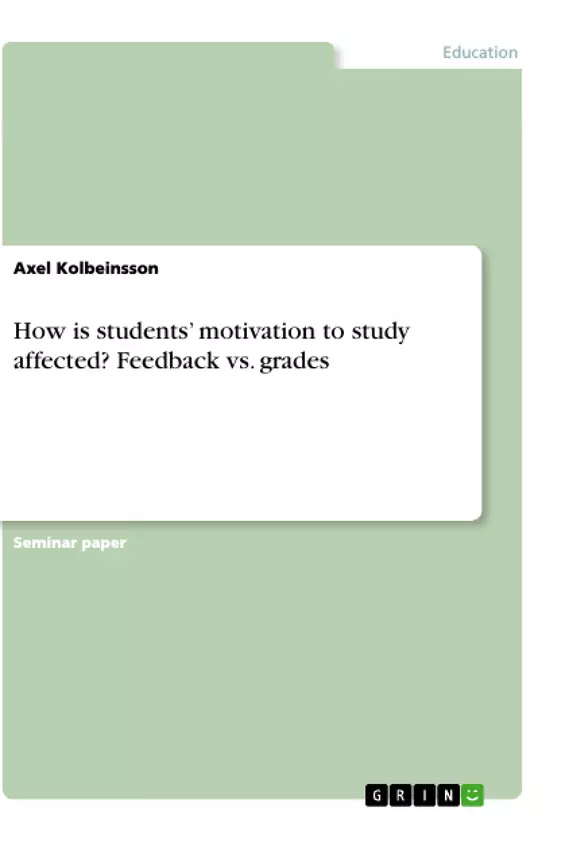Motivation plays a crucial role in students’ performance. It is well known that not all students share the same amount as well as kind of motivation for the same tasks and activities. Also, not all teachers apply the same motivation strategy in their lessons as well as when giving grades and feedback for student performances. Whereas some teachers really struggle with a demotivated class, others are able to generate dynamics that benefit the whole class and help to even exceed expected results in performance. Why do some succeed while others struggle? What strategies are important for maintaining as well as developing students’ motivation towards tasks and activities? In order to generate answers to these questions, this term paper focuses on the effect of feedback on students’ motivation. In order to address the topic accordingly, in the beginning, the term motivation as well as the different kinds are explained. Then current theories regarding verbal and written feedback as opposed to letter and numeral grades are analyzed. Lastly, the findings are put in contrast with the current situation in schools.
Inhaltsverzeichnis (Table of Contents)
- Motivation: An Overview
- Nonself-Determined Motivation
- Self-Determined Motivation
- The effect of grades and feedback on student's motivation
- Feedback: a definition
- Motivation and Feedback: Interrelation
- Verbal Feedback vs. Grades
- The influence of verbal feedback and grades on students’ motivation
- Further Research: Implications for Classroom Practice
Zielsetzung und Themenschwerpunkte (Objectives and Key Themes)
This term paper explores the impact of feedback on students' motivation to learn, specifically examining the differences between verbal feedback and numerical grades. The paper aims to analyze how different forms of feedback influence the motivation of students, particularly focusing on the distinction between intrinsic and extrinsic motivation.
- The nature of student motivation and its various forms
- The role of feedback in shaping students' motivation
- The comparative effects of verbal feedback and grades on student motivation
- The influence of feedback on students' learning strategies and engagement
- Implications for classroom practice and strategies for enhancing student motivation
Zusammenfassung der Kapitel (Chapter Summaries)
- Motivation: An Overview: This chapter provides a comprehensive overview of motivation theories, focusing on intrinsic and extrinsic motivation. It explores the various factors that influence motivation, including classroom environment, assessment practices, and teacher behaviors.
- The effect of grades and feedback on student's motivation: This section delves into the concept of feedback, its role in student learning, and its impact on motivation. It examines different types of feedback, including grades, verbal feedback, and written comments.
- Motivation and Feedback: Interrelation: This chapter investigates the interconnectedness of motivation and feedback, analyzing how different feedback strategies influence students' intrinsic and extrinsic motivation. The chapter delves into the effectiveness of verbal feedback compared to grades in promoting student motivation.
Schlüsselwörter (Keywords)
This paper focuses on student motivation, feedback, grades, intrinsic motivation, extrinsic motivation, verbal feedback, written feedback, learning strategies, classroom environment, and assessment practices. The research explores the impact of different feedback strategies on students' motivation to learn and their engagement in educational activities.
- Quote paper
- Axel Kolbeinsson (Author), 2022, How is students’ motivation to study affected? Feedback vs. grades, Munich, GRIN Verlag, https://www.grin.com/document/1191937



